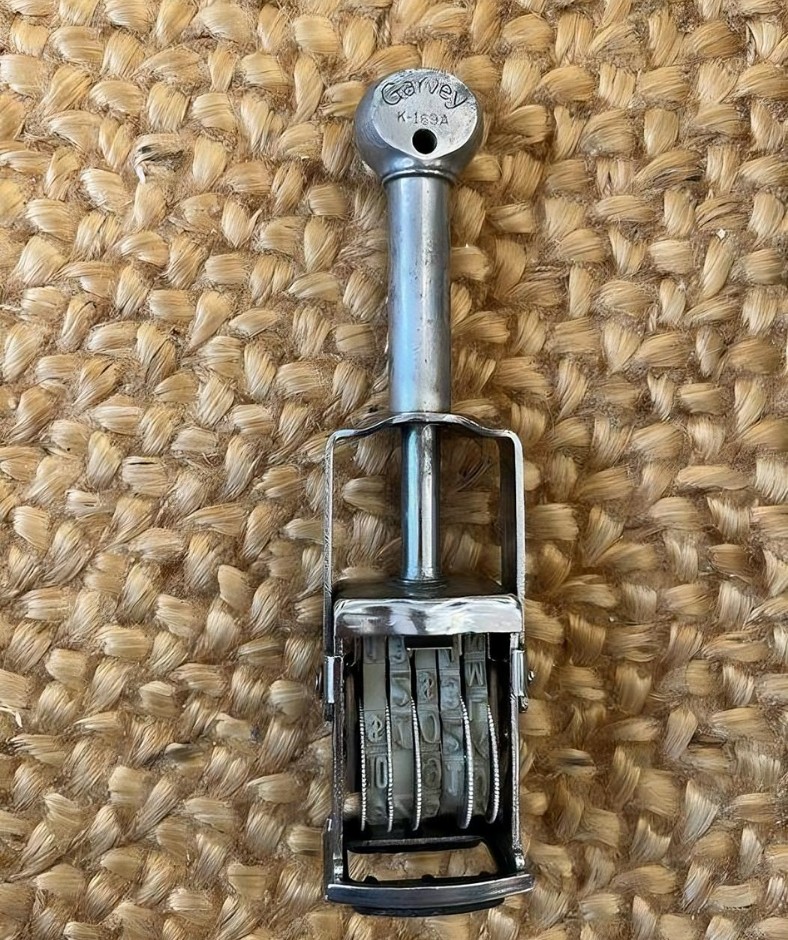The vintage price marker ink stamp is a captivating piece of office history that reflects a bygone era of business operations. Once an essential tool in retail and business sectors, this piece of equipment was used for price tagging and managing inventory, and it holds a special place in the evolution of office tools. It not only fulfilled a critical role in commerce but also mirrored the technological and design advancements of its time. In this article, we will explore the origins, technological evolution, and lasting legacy of this fascinating instrument.

Origins and Evolution
The story of the vintage price marker ink stamp began in the early 20th century. As businesses grew and the retail industry expanded, the need for efficient pricing systems became increasingly apparent. The price marker ink stamp emerged as a solution to help streamline the price tagging process. The first models were simple, manually operated devices that required ink pads and manual adjustments to change the prices. While basic in design, these early stamps played a crucial role in standardizing how products were labeled, replacing the tedious practice of writing prices by hand.
As the demand for efficiency increased, these early price markers quickly became an integral tool in the retail industry. They provided store owners with a way to tag multiple products consistently, which helped improve inventory management and allowed businesses to operate more smoothly.
Technological Advancements
By the mid-20th century, technological advancements led to significant improvements in the design and functionality of price marker ink stamps. During this time, the materials used in these tools evolved—metal components replaced earlier, less durable materials, and the engineering of the stamps became more sophisticated. This led to more durable and reliable models that could withstand the daily wear and tear of busy retail environments.
One of the most notable advancements was the introduction of self-inking models, which greatly simplified the price marking process. No longer did clerks need to manually re-ink the stamp after every use; these new self-inking models streamlined the process, allowing for faster and more efficient marking of products. This shift not only saved time but also reduced errors and made the stamps more user-friendly, representing a major leap forward in pricing technology.
Efficient Pricing
The main purpose of the price marker ink stamp was to make the pricing process efficient and consistent. With these stamps, retailers could quickly apply prices to a variety of items, which significantly sped up the inventory process and reduced human error. Unlike manually writing out prices, which often resulted in inconsistencies and mistakes, the ink stamps ensured that every item received a uniform price tag. This efficiency was especially valuable as businesses grew in size, with more products needing to be priced accurately and rapidly.
Versatility
Another notable feature of the vintage price marker ink stamp was its versatility. It was suitable for a wide range of products and packaging types. Retailers used these stamps for marking price labels, inventory tags, and even promotional materials. Their versatility made them valuable in numerous business settings, from small local shops to larger retail operations. The adaptability of these stamps ensured that they remained useful across different industries and types of merchandise.
Maintenance and Care
To keep these stamps functioning properly, maintenance was key. Proper care was essential to ensure their longevity and effectiveness. This included regular cleaning of the ink pads and internal mechanisms to prevent ink from smudging and to maintain legible price markings. Replenishing the ink and inspecting the stamp for signs of wear and tear were routine tasks that kept these tools working smoothly. With the right maintenance, a price marker ink stamp could provide years of reliable service, which was crucial for businesses relying on them day in and day out.
Cultural Impact
The vintage price marker ink stamp holds an important place in the history of business tools. It represents an era when manual devices were at the heart of retail operations. Before the advent of digital technology, these tools were essential for keeping businesses organized and efficient. The design and functionality of the stamps reflect the ingenuity of that period, showcasing how practical innovations helped shape business practices. They serve as a reminder of the significant role manual tools once played in retail and office environments.
Influence on Modern Tools
Although digital technologies have largely replaced manual price markers, the legacy of the vintage price marker ink stamp endures. Many modern pricing and labeling systems draw inspiration from the efficiency and precision that these early tools established. Barcodes, digital labels, and even modern pricing guns owe much to the foundational principles of accuracy and usability that the price marker ink stamps helped to pioneer.
Collector’s Item
Today, vintage price marker ink stamps have become sought-after collector’s items. Their historical value, intricate craftsmanship, and nostalgic appeal make them highly prized by collectors and enthusiasts. You can often find these stamps at auctions and in specialty shops, and some of the rarer or better-preserved models can fetch significant prices. For collectors, these items represent not only a piece of office equipment but also a tangible connection to a different time in the business world.
Preservation and Restoration
The enduring interest in these vintage tools has inspired many preservation and restoration efforts. Collectors and enthusiasts dedicate time and effort to restore price marker stamps to their original condition, preserving their historical integrity for future generations. These restoration projects highlight the cultural and historical importance of these tools and ensure that their legacy continues to be appreciated long after their original purpose has been replaced by digital alternatives.
Conclusion
In conclusion, the vintage price marker ink stamp is a testament to the practical ingenuity of its time. Its history, development, and continued interest from collectors reflect the impact that this tool had on the business and retail sectors. From its practical applications in price tagging to its lasting legacy as a cherished collectible, this classic instrument tells a fascinating story about the evolution of office and retail tools. Even though digital solutions have taken over much of its functionality, the vintage price marker ink stamp remains a symbol of an era when manual precision and efficiency were at the forefront of retail innovation.





